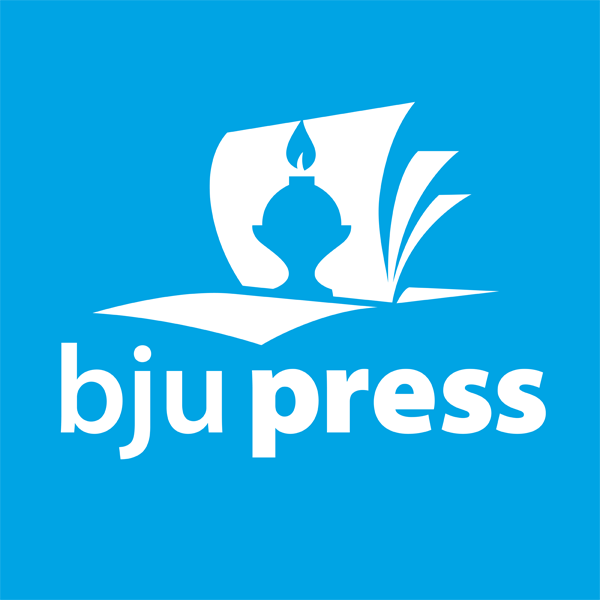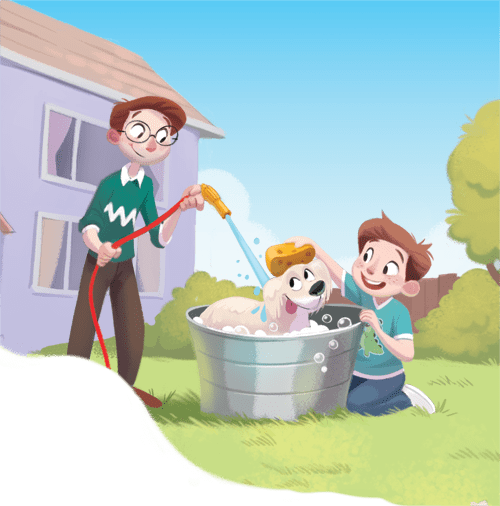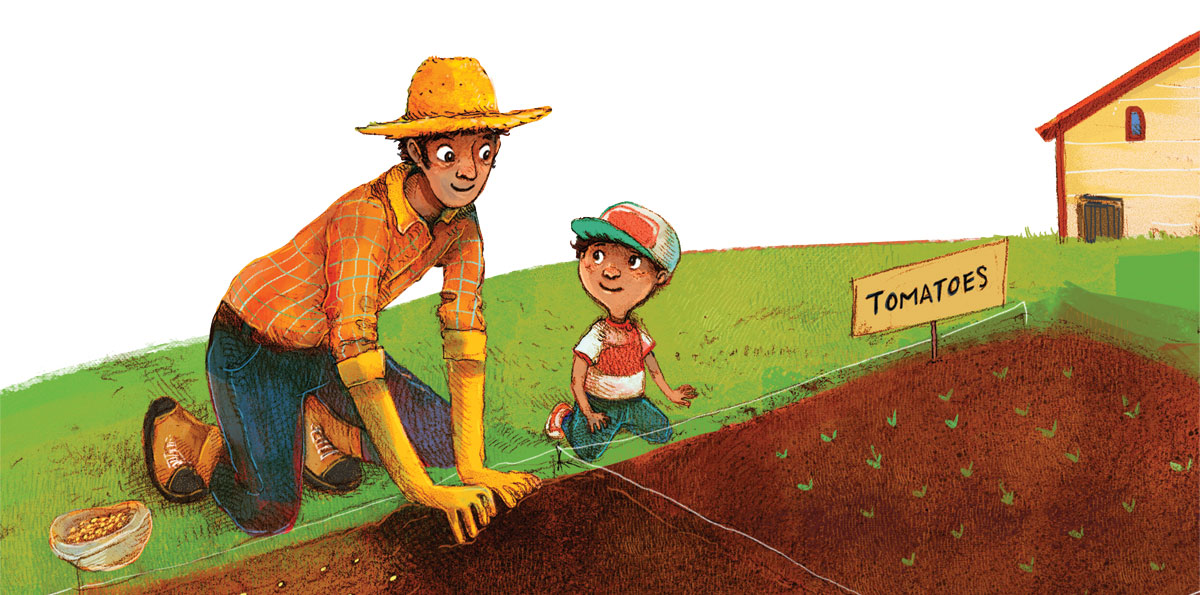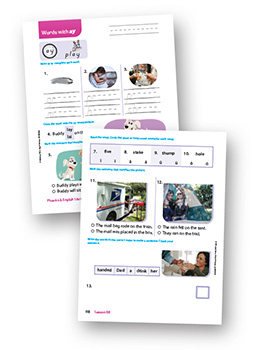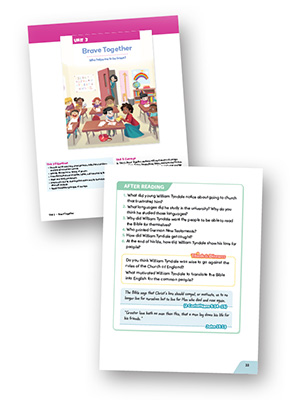The BJU Press elementary reading program challenges students to engage with what they read. Literature—whether it is fiction, nonfiction, drama, or poetry—enables people to consider, make sense of, celebrate, lament, and even change the world. We want students to enjoy reading all types of literature so that they will become lifelong readers. We also want them to analyze, interpret, and evaluate everything they read from a biblical worldview. More than any other people, Christians should value reading because God reveals Himself to His people through a book. In addition to helping us know God, reading skills also prepare us to be better servants of Christ. The apostle Paul lays out for us the standard by which Christians should measure what they read: things that are true, honorable, right, pure, lovely, and commendable (Phil. 4:8). In other words, we should read that which conveys truth, goodness, and beauty.
Vision
To equip students to enjoy lifelong reading, to analyze and interpret texts in a variety of genres, to evaluate all that they read from a biblical worldview, and to become effective communicators.
Goals
- To foster the joy of reading
- To integrate a systematic approach to phonics instruction that includes phonological awareness and sight recognition
- To teach comprehension through knowledge building, vocabulary development, language structures, critical thinking, and literacy knowledge
- To differentiate instruction with small groups to meet the instructional needs of individual students
- To develop discernment by evaluating literature from a biblical worldview
Program Approach for Reading
Legacy and Innovation
BJU Press has a legacy of robust reading instruction with a sustained emphasis on explicit, systematic phonics instruction and a focus on reading comprehension. But we are not resting on the successes of our past—we are innovating to ensure that our educational products reflect current best practices and educational research. BJU Press maintains a strong awareness of the Science of Reading as well as an awareness of educational standards in reading instruction. We are open to innovation, while also mindful of our role in the learning process as a publisher.
Language Comprehension
One of the crucial life skills that students develop is language comprehension, which includes background knowledge, critical-thinking skills, and knowledge of vocabulary, language structures, and literacy concepts. To assist the teacher in developing these skills, we provide both simple recall and critical-thinking questions about reading selections. We also emphasize reading skills, vocabulary instruction, and strategies for understanding various genres.
How We Do It
- Carefully selected, grade-appropriate texts allow students to build knowledge in a variety of genres.
- Varied question types increase academic rigor and critical thinking.
- Collaborative activities enhance language development.
- Differentiated instruction features in the Teacher Edition provide resources for remediation, varied instruction, and enrichment.
- Literary skills paragraphs on Before Reading pages develop reading skills.
Word Recognition
The ability to automatically decode words is foundational to reading, especially in first and second grade. In order for students to recognize words, they need a thorough understanding of letter-sound correspondence. Students also need the ability to identify and blend sounds into words and to recognize many common and irregular words on sight.
Our Phonics Instruction
- Begins with systematic development of phonemic awareness to help students encode and decode words, build fluency, and achieve comprehension
- Uses engaging phonics characters to reinforce word family patterns and build phonological awareness
- Includes supplemental decodable texts that provide students with opportunities to apply and reinforce phonics skills
- Introduces a new Phonics Progress Monitoring tool to assist teachers with instruction and forming effective reading groups
- Offers new differentiated phonics lessons to enable teachers to customize instruction for individual student needs
Grouping for Reading Instruction
Grouping for reading instruction should be fluid and flexible with the ultimate goal of developing word recognition and robust language comprehension. Though there are several ways to group students for reading instruction, the most strategic way in the early grades is according to their ability to apply phonics skills. This helps struggling readers who may require additional phonics instruction. Resources for differentiated phonics instruction are provided in BJU Press materials for grades 1 (on BJU Press Trove®) and 2. Because of the varied needs of students, the lessons are designed to give the teacher flexibility during reading instruction, building both language comprehension and word recognition.
Teachers can use the Phonics Progress Monitoring tool to:
- Diagnose reading gaps.
- Identify learning goals and create groups based on similar phonics needs.
- Provide targeted instruction based on student skills.
- Give support for regular assessment to make group creation flexible and fluid.
Assessing Reading Progress
Many teachers struggle with the question, “How do I assess reading?” Understanding a student’s reading skills involves monitoring that student’s decoding ability, fluency, and comprehension. BJU Press Reading materials have many tools available to teachers for this process.
Assessment Tools
- Phonics Progress Monitoring tool
- Informal Reading Evaluation
- Formative assessment check sheets
- Reading fluency guidance
- Written comprehension assessment strategies
- Cold-read comprehension checks
Find these tools, and more, in your Teacher Edition or BJU Press Trove (may vary by grade).
Materials
Student Edition
The student edition readers provide interesting, developmentally appropriate selections from a variety of genres. The level of difficulty progresses in readability and skills to give students every opportunity for success. Bible retellings closely follow the text in Scripture to translate reading skills into Bible study skills.
Student Activities
Student activities include independent practice materials that reinforce skills covered in the lessons, including application of phonics, vocabulary, comprehension, and composition.
Teacher Edition
Each grade’s teacher edition includes detailed lesson guides with vocabulary sentences and literary instruction, literal and higher-order discussion questions, and pre-reading and post-reading activities to meet multiple learning styles. Grades 1–3 also include phonics instruction or review as a component of the reading lesson.
Assessments
Assessments packets provide tools to determine whether students can demonstrate proficiency in three components in the reading process: comprehension from silent reading, oral fluency from read-alouds, and written comprehension. The packet includes rubrics for determining a grade for these components as well as reading comprehension tests for grades 2–5 (grade 1 comprehension assessments are located in the back of the teacher edition). Each packet includes teacher instructions, answer keys, rubrics, and reproducible tests.
Novel Studies
If using novel studies, purchase individual copies for each student in the group or class. Teaching guides for integrated novel studies are included either as BJ Booklink guides in grades 2–3 or in a volume of the teacher edition in grades 1, 4–5.
Scope & Sequence
Auditory Discrimination
Distinguish long from short vowel sounds in spoken words; segment and blend sounds to form words; isolate and pronounce initial, medial, and final sounds; syllabication using vowel sounds; identify rhyming words
Letter-Sound Association
Spelling-sound correspondence of common consonant digraphs; decode one- and two-syllable words (syllabication); decode words with inflectional endings; recognize and read first-grade irregularly spelled words (high-frequency words)
Fluency
Read grade-level text aloud with accuracy and appropriate expression; use context to self-correct, rereading as necessary
Main Ideas and Details
Ask and answer questions; retell stories, including key details; identify main topic and important details; describe characters; describe connections between characters, events, or ideas in text; identify setting; sequence events
Author’s Craft / Text Structure
Identify figurative language and onomatopoeia; identify sensory details; identify fiction vs. nonfiction; identify different genres of text; identify speaker / point of view; ask and answer clarifying questions; identify and interpret text features and graphic features; identify problem and solution
Integration of Knowledge and Ideas
Use illustrations to describe characters, setting, events (fiction), or key ideas (nonfiction); make inferences from illustrations; draw conclusions using background knowledge or textual information; identify basic similarities and differences between two texts on the same subject; compare and contrast characters’ experiences in stories; make and verify predictions; make text-to-self connections, text-to-text connections, and text-to-world connections
Character Analysis
Identify character traits; infer character motives; identify character emotions; evaluate characters’ traits and actions
Composition
Formulate a different ending to a story; compose poems featuring onomatopoeia and elements of shape
Biblical Worldview Shaping
- Wisdom—Learning to live well in God’s world
- Hard Work—Valuing hard work as a way to love God and others
- Kindness—Acting and communicating with goodness and helpfulness
- Obedience—Developing an attitude of submission to God and authority
- God’s Creation— Appreciating God’s wonderful world
- Contentment—Growing in gratitude to please God
Phonemic Awareness
- Phonemic awareness: isolating, segmenting, blending, adding, subtracting phonemes
- Review of phonics: the 44 sounds of English with many of the variant spellings
Decoding
- Differentiated phonics lessons:
- build sound/symbols correspondences
- identify graphemes
- read words in isolation
- read phonetically controlled text
- encode words
- Automaticity
- Consonant blends and digraphs; silent consonants, soft and hard c and g; vowel sounds: short, long, r-influenced, special, schwa sounds, variants
- Identifying and manipulating the six syllable types;
Word Recognition
- Decoding Text
- Open/closed syllables; VC/CV pattern, consonant + -le, VCe, vowel teams, r-controlled
- Counting syllables; syllable division: base words/ prefixes/suffixes
- High-Frequency words; single-syllable and multisyllabic words; compound words, word fluency
Background Knowledge
- Literal and abstract questions; biblical worldview
- Visual analysis; following directions; sequencing; classifying; comparison and contrast; cause and effect; problem and solution, summarizing
- Making inferences; drawing conclusions; predicting outcomes
- Time/place relationships; relevant information; facts/ opinions; main idea
- Various genres: realistic fiction, historical fiction, fantasy, fable, folktale, informational text, procedural text, Bible account, biography, poetry, myth, play, mystery, readers theater, novel
- Main character; character development, motives, traits
- Setting; plot; point of view; fantasy elements; idioms; imagery; similes; figurative language
- Poetry: rhyme; rhythm; repetition; onomatopoeia; alliteration
- Book parts: title, author, illustrator, contents, glossary
- Graphic organizers
Vocabulary
- Meaning from context; synonyms; antonyms; homophones
- Morphology:
- prefixes
- suffixes
- compound words
- contractions
- Using vocabulary in reading, writing, and speaking
Language Structures
- Semantics
- alliteration
- compound words
- contractions
- figurative language
- homophones
- hyperbole
- idioms
- imagery
- morphemes
- onomatopoeia
- similes
- Syntax
- abbreviations
- action words
- adjectives (comparatives and superlatives)
- describing words
Phonics and Word Recognition
Phonics review, introduction of additional variant spellings; Syllable division: base words/prefixes/suffixes, VC/CV pattern, compound words, prefixes/suffixes, two-syllable words, words ending with -tion, consonants + le, schwa syllables; Service words review
Vocabulary
Meaning from context; Synonyms; Antonyms; Analogies; Compound words; Contractions
Comprehension
Literal, interpretative, critical, appreciative levels; Biblical truth; Sequence, classify, compare and contrast, cause and effect, problem and solution; Make inferences, draw conclusions, predict outcomes; Time/place relationships, relevant information, facts/opinions, main idea; Punctuation, capitalization, abbreviations, comparatives/superlatives, possessives, pronouns, verbs, adverbs, adjectives
Literature
Reading a variety of genres: realistic fiction, historical fiction, fantasy, fable, folktale, tall tale, article, Bible account, biography, poetry, play, nonfiction, legend; Main character, character development, motives, traits; Setting, plot, point of view, fanciful elements, conflict, foreshadowing, fanciful elements; Poetry: rhyme, rhythm, onomatopoeia, alliteration, quatrains; Idioms: imagery, personification, metaphor, simile, humor, sarcasm, suspense
Study Skills
Book parts: contents, glossary; Encyclopedia, Bible concordance, cross-references, biographical dictionary, newspaper, classified ad; Skimming, scanning, PQ3R study method; Calendar, maps, diagrams, graphs, timeline, schedule
Fluency
Silent Reading: read for understanding, specific information, biblical truth, author's message; Oral Reading: communicate message of the author, language-like flow, communicate meaning, mood, portray characters, emotion, respond to punctuation, choral reading
Composition
Poetry, simile, rhyming riddles, alliterative phrases; News article, classified ad, personal experience, journal entry, friendly letter, persuasive essay, descriptive paragraph; Story mapping, play writing, tall tale, research writing, decree/law, financial report
Word Recognition
Optional remedial phonics
Vocabulary
Meaning from context; Synonyms; Antonyms; Analogies; Greek and Latin roots; Multiple Meanings
Comprehension
Literal and higher-order levels; Sequence, classify, compare and contrastm cause and effect, problem and solution; Make inferences, draw conclusions, predict outcomes; Place/size/time relationships, relevant/irrelevant information, facts/opinion, main idea, dialect, discernment, sense of history; Biblical discernment and cultural awareness
Literature
Reading a variety of genres: realistic fiction, historical fiction, Christian fiction, mystery, biography, autobiography, narrative nonfiction, informational text, procedural text, proverbs, parables, psalm, Bible account, fantasy, folktale, fable, tall tale, myth, poetry, reader’s theater, play; Main character, character motives, traits, background, and development; Setting, plot, theme, cause and effect, climax, point of view, conflict, foreshadowing, irony, moral, mood, suspense, good/evil elements, humor, symbol, word play, main idea and supporting details, worldview; Imagery, personification, onomatopoeia, metaphor, simile, exaggeration, dialect, palindrome; Poetry: free verse, haiku, limerick, acrostic, shape poems; rhyme, rhythm
Study Skills
Glossary, dictionary, Bible concordance, Bible study, internet research; Maps, timelines, diagrams, graphs, charts, sidebars, captions, titles, subtitles/section titles
Fluency
Silent Reading: for information, entertainment, understanding, spiritual growth, author's message, biblical truth; Oral Reading: communicate message of the author, communicate mood and motive, portray characters, convey emotion, convey meaning of Scripture, voice inflection, volume and pacing
Composition
Metaphor, simile, haiku, limerick, acrostic, folktale ending, letter, journal entry, research writing, interview
Vocabulary
Meaning from context; synonyms; antonyms; analogies; Greek and Latin roots; multiple meanings
Comprehension
Literal and higher-order levels; Sequence; classify; compare and contrast; cause and effect; problem and solution; Make inferences; draw conclusions; predict outcomes; summarize; Self-monitoring; facts/opinion; main idea and supporting details; sense of history; Biblical discernment and cultural awareness
Literature
Various genres: realistic fiction, historical fiction, Christian fiction, science fiction, mystery, biography, autobiography, narrative nonfiction, informational text, procedural text, proverbs, Bible prophecy, Bible account, fantasy, folktale, fable, tall tale, myth, poetry, reader’s theater; Main character; character motives, traits, background, dialect, development; Setting; plot; theme; cause and effect; climax; rising and falling action; point of view; conflict; foreshadowing; humor; invented words; irony; moral; mood; suspense; symbol; rhetorical questions; tone; wordplay; worldview; Imagery; personification; onomatopoeia; metaphor; simile; exaggeration; dialect; Poetry: free verse, limerick, hymn, sonnet, tanka, riddles, rhyme, rhythm
Study Skills
Glossary; dictionary; Bible concordance; Bible study; Summarizing; skimming; internet research; digital literacy; Maps; timelines; diagrams; graphs; charts; sidebars; captions; titles; subtitles/section titles
Book Reports
Writing process used to prepare and present written and oral book reports
Fluency
Silent reading: for information, entertainment, understanding, spiritual growth, author’s message, and biblical truth; Oral reading: communicate author’s message; communicate mood and motive; convey emotion; portray character; convey meaning of Scripture; voice inflection; volume and pacing
Composition
Metaphor; simile; haiku; tanka; limerick; letter; journal entry; research writing; interview
